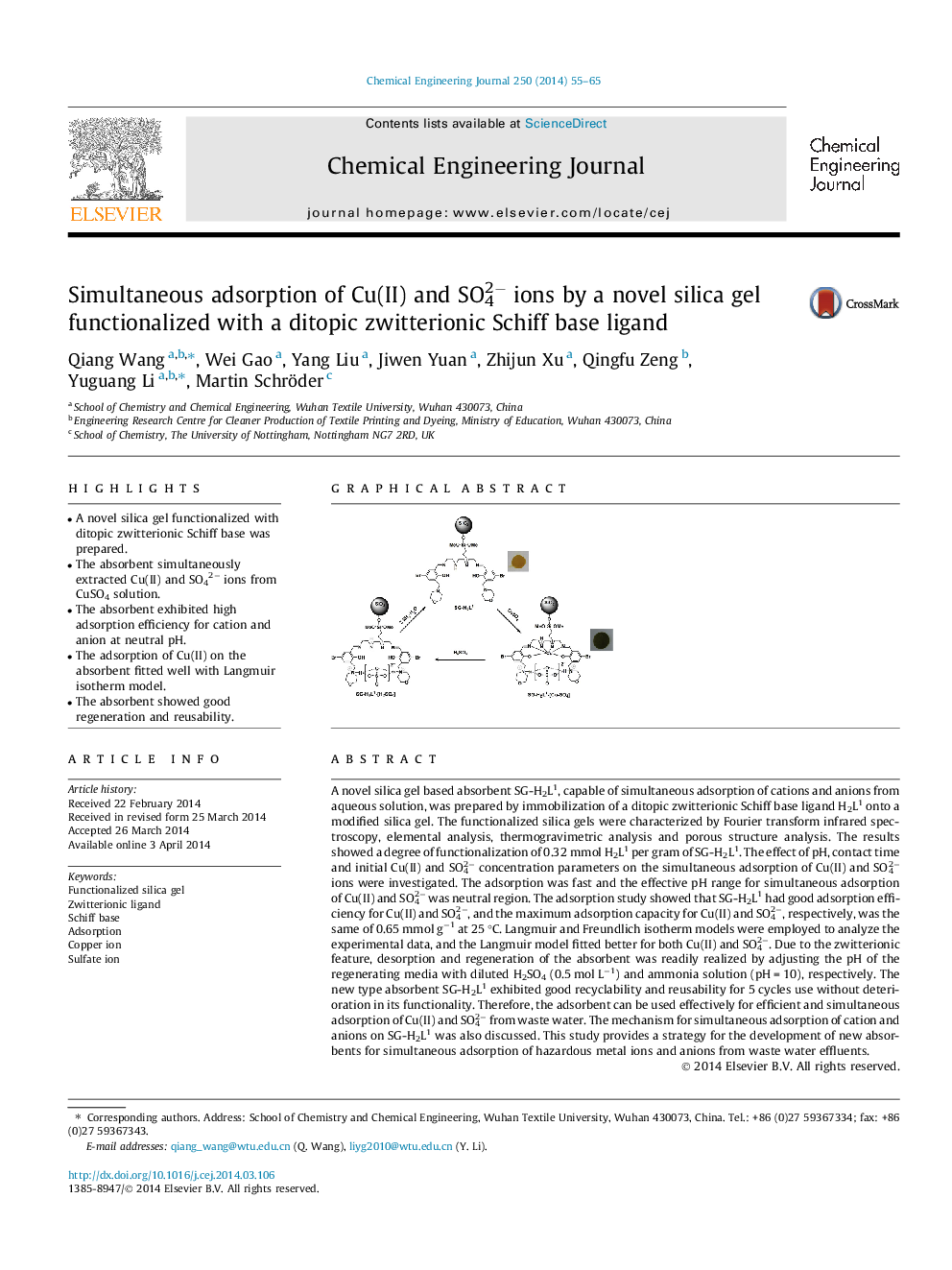| Article ID | Journal | Published Year | Pages | File Type |
|---|---|---|---|---|
| 147348 | Chemical Engineering Journal | 2014 | 11 Pages |
•A novel silica gel functionalized with ditopic zwitterionic Schiff base was prepared.•The absorbent simultaneously extracted Cu(II) and SO42− ions from CuSO4 solution.•The absorbent exhibited high adsorption efficiency for cation and anion at neutral pH.•The adsorption of Cu(II) on the absorbent fitted well with Langmuir isotherm model.•The absorbent showed good regeneration and reusability.
A novel silica gel based absorbent SG-H2L1, capable of simultaneous adsorption of cations and anions from aqueous solution, was prepared by immobilization of a ditopic zwitterionic Schiff base ligand H2L1 onto a modified silica gel. The functionalized silica gels were characterized by Fourier transform infrared spectroscopy, elemental analysis, thermogravimetric analysis and porous structure analysis. The results showed a degree of functionalization of 0.32 mmol H2L1 per gram of SG-H2L1. The effect of pH, contact time and initial Cu(II) and SO42− concentration parameters on the simultaneous adsorption of Cu(II) and SO42− ions were investigated. The adsorption was fast and the effective pH range for simultaneous adsorption of Cu(II) and SO42− was neutral region. The adsorption study showed that SG-H2L1 had good adsorption efficiency for Cu(II) and SO42−, and the maximum adsorption capacity for Cu(II) and SO42−, respectively, was the same of 0.65 mmol g−1 at 25 °C. Langmuir and Freundlich isotherm models were employed to analyze the experimental data, and the Langmuir model fitted better for both Cu(II) and SO42−. Due to the zwitterionic feature, desorption and regeneration of the absorbent was readily realized by adjusting the pH of the regenerating media with diluted H2SO4 (0.5 mol L−1) and ammonia solution (pH = 10), respectively. The new type absorbent SG-H2L1 exhibited good recyclability and reusability for 5 cycles use without deterioration in its functionality. Therefore, the adsorbent can be used effectively for efficient and simultaneous adsorption of Cu(II) and SO42− from waste water. The mechanism for simultaneous adsorption of cation and anions on SG-H2L1 was also discussed. This study provides a strategy for the development of new absorbents for simultaneous adsorption of hazardous metal ions and anions from waste water effluents.
Graphical abstractFigure optionsDownload full-size imageDownload as PowerPoint slide
